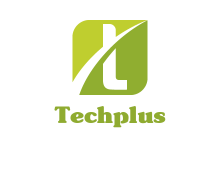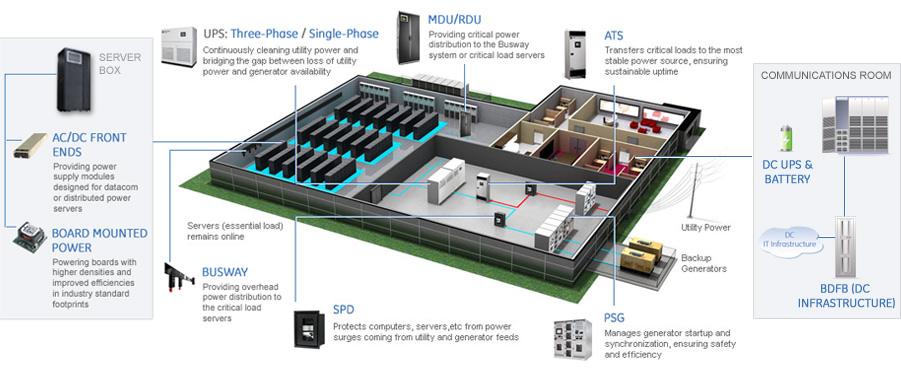Data Centers
Data centers are physical or virtual infrastructure used by enterprises to house computer, server and networking systems and components for the company’s information technology (IT) needs, which typically involve storing, processing and serving large amounts of mission-critical data to clients in a client/server architecture.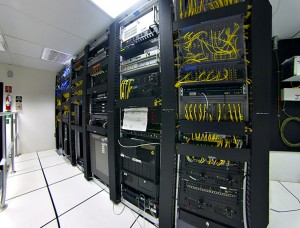
A data center, or data center, often requires extensive redundant or backup power supply systems, cooling systems, redundant networking connections and policy-based security systems for running the enterprise’s core applications.
Data center management involves ensuring the reliability of both the connections to the data center as well as the mission-critical information contained within the data center’s storage. It also entails efficiently placing application workloads on the most cost-effective compute resource available.
The space will typically have a raised floor with cabling ducts running underneath to feed power to the cabinets and carry the cables that connect the cabinets together.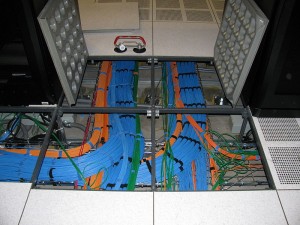
The environment is controlled in terms of areas such as temperature & humidity, both to ensure the performance and the operational integrity of the systems within. Facilities will generally include power supplies, backup power, chillers, cabling, fire and water detection systems and security controls.
There are many types of commercially available floors that offer a wide range of structural strength and loading capabilities, depending on component construction and the materials used. The general types of raised floors include stringerless, stringered, and structural platforms, all of which are discussed in detail in GR-2930 and summarized below.
- Stringerless raised floors – One non-earthquake type of raised floor generally consists of an array of pedestals that provide the necessary height for routing cables and also serve to support each corner of the floor panels. With this type of floor, there may or may not be provisioning to mechanically fasten the floor panels to the pedestals. This stringerless type of system (having no mechanical attachments between the pedestal heads) provides maximum accessibility to the space under the floor. However, stringerless floors are significantly weaker than stringered raised floors in supporting lateral loads and are not recommended.
- Stringered raised floors – This type of raised floor generally consists of a vertical array of steel pedestal assemblies (each assembly is made up of a steel base plate, tubular upright, and a head) uniformly spaced on two-foot centers and mechanically fastened to the concrete floor. The steel pedestal head has a stud that is inserted into the pedestal upright and the overall height is adjustable with a leveling nut on the welded stud of the pedestal head.
- Structural platforms – One type of structural platform consists of members constructed of steel angles or channels that are welded or bolted together to form an integrated platform for supporting equipment. This design permits equipment to be fastened directly to the platform without the need for toggle bars or supplemental bracing. Structural platforms may or may not contain panels or stringers.
Data centers typically have raised flooring made up of 60 cm (2 ft) removable square tiles. The trend is towards 80–100 cm (31–39 in) void to cater for better and uniform air distribution. These provide a plenum for air to circulate below the floor, as part of the air conditioning system, as well as providing space for power cabling.
As mentioned above Data centers also need Backup Power systems so that they can always give the necessary service 24X7.Backup power consists of one or more uninterrupted power supplies, battery banks, and/or diesel / gas turbine generators. To prevent single points of failure, all elements of the electrical systems, including backup systems, are typically fully duplicated, and critical servers are connected to both the “A-side” and “B-side” power feeds. This arrangement is often made to achieve N+1 redundancy in the systems. Static transfer switches are sometimes used to ensure instantaneous switchover from one supply to the other in the event of a power failure. Please take a look at the below Diagram for the Design of Data centers.
Data centers feature fire protection systems, including passive and active design elements, as well as implementation of fire prevention programs in operations. Smoke detectors are usually installed to provide early warning of a fire at its incipient stage. This allows investigation, interruption of power, and manual fire suppression using hand held fire extinguishers before the fire grows to a large size. An active fire protection system, such as a fire sprinkler system or a clean agent fire suppression gaseous system, is often provided to control a full scale fire if it develops. High sensitivity smoke detectors, such as aspirating smoke detectors, activating clean agent fire suppression gaseous systems activate earlier than fire sprinklers.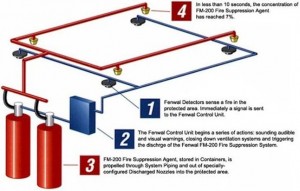
- Sprinklers = structure protection and building life safety.
- Clean agents = business continuity and asset protection.
- No water = no collateral damage or clean up.
Passive fire protection elements include the installation of fire walls around the data center, so a fire can be restricted to a portion of the facility for a limited time in the event of the failure of the active fire protection systems. Fire wall penetrations into the server room, such as cable penetrations, coolant line penetrations and air ducts, must be provided with fire rated penetration assemblies, such as fire stopping.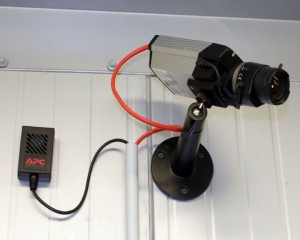
Physical security also plays a large role with data centers. Physical access to the site is usually restricted to selected personnel, with controls including a layered security system often starting with fencing, bollards and mantraps. Video camera surveillance and permanent security guards are almost always present if the data center is large or contains sensitive information on any of the systems within. The use of finger print recognition mantraps is starting to be commonplace.
Techplus Can design and implement state of the art data center infrastructures that contains Redundant Power Solutions, Air Conditioning Systems, Raised Floors for Structured data and power cabling, Physical security solutions with CCTV cameras, Access controls and Fire prevention and detection systems with heat and smoke detectors. Please take a look at our certification Pages to see the data center technologies we are certified on.
